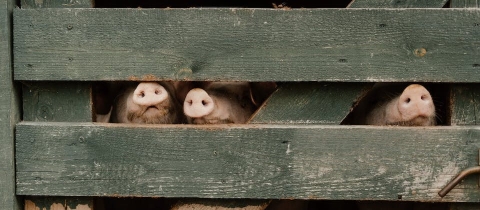We can actually learn a lot of science from seeing them made. For thousands of years people have been stuffing ground meat along with various spices and other ingredients into casings. Homer sang of sausages in The Odyssey, written around 850 BC. The Romans traditionally made sausages from ground pork and pine nuts for the celebration of Lupercalia, a feast of eating, drinking and wenching. These sausages became so intricately connected to debauchery that Constantine, the first Christian Emperor, actually banned them. Sausage bootlegging became a profitable enterprise.
By the Middle Ages, hundreds of varieties of sausages had been developed. Many of these, like bologna, were named after the city where they were developed. But the variety that plays the greatest role in our lives originated in the German city of Frankfurt. The frankfurter was made with cured meat and was cooked by smoke.
Legend has it that the frankfurter was introduced into North America by Anton Ludwig Feuchtwanger, a Bavarian peddler who had emigrated to America. In 1904 he set up a booth at the St. Louis World’s Fair and sold frankfurters as snacks. Since these sausages were greasy and hot, he loaned his customers white gloves with which to hold them. So many people absconded with the gloves that he needed another solution. His brother-in-law, a baker, came up with one. Why not put the frankfurter in a bun? Why not indeed! The new product was an instant success. Everyone wanted to try the new fangled hot “Dachshund sausages,” as the franks were now called because of their resemblance to these lengthy canines. Soon the name was abbreviated to “hot dog,” and a North American staple was born. There were some growing pains, however. In 1913, the Chamber of Commerce banned hot dogs from Coney Island in New York because of persistent rumours that they were made from dog meat. The ban was rescinded in 1916 when Nathan Handwerker guaranteed that he would make a quality product. He delivered, and Nathan’s, the Mecca of hot dog emporium’s was born.
Let’s face it, we know that hot dogs are not health food. Babe Ruth can testify to that. He once ate a dozen hot dogs during a ball game. And he was playing! Sure they had to rush him to the hospital afterwards to pump out his stomach, but the Babe was never one for moderation. A Brooklyn psychiatrist who analyzed the personality differences between hamburger and hot dog eaters would not be surprised by the Babe’s antics. Hamburger enthusiasts, he said, were steady, reliable and predictable. Hot dog lovers, on the other hand, were found to be romantics with a flair for adventure. In the case of Babe Ruth's dozen hot dogs, I'd say he was more risky than romantic.
Want to comment on this article? Visit our FB Page!







